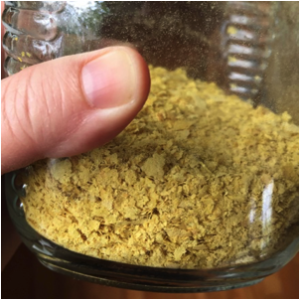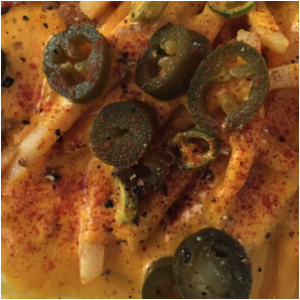 I cut my SFF teeth on Star Trek, and I credit The Next Generation as setting me on the path to becoming an SFF author. But I lament the monocultures encountered on those Starfleet missions as a missed opportunity. Monocultures may catch attention as a hook, but the believability crumbles when the reader has a lengthy stay and finds that they lack real depth.
I cut my SFF teeth on Star Trek, and I credit The Next Generation as setting me on the path to becoming an SFF author. But I lament the monocultures encountered on those Starfleet missions as a missed opportunity. Monocultures may catch attention as a hook, but the believability crumbles when the reader has a lengthy stay and finds that they lack real depth.
My favorite part of writing SFF is inviting the reader to explore new worlds with unearthly mechanics, magic systems, or zoology that entrance the imagination. But what imprints a story on the reader’s soul is the ability to relate to the experience. The real world contains multitudinous experiences, cultures, and viewpoints. It’s important to reflect that in our stories, even if we are zooming in on a more intimate story.
Avoiding monoculture by creating characters who have different experiences makes a story feel vibrant, more faithful, and realistic. When those characters interact, it adds conflict, tension, and opportunities to create real magic.
Building this kind of depth is not hard! It just takes more of the thoughtful and intentional world-building the author is already engaged in. It doesn’t limit the author’s imagination, it gives it more opportunity.
 The first book in my Peridot Shift series is told via my airship captain and ne’er-do-well, Talis. While choosing one POV tightened up the story considerably from earlier drafts where multiple characters took center stage, it was incredibly frustrating to describe the entirety of Peridot through the lens of Talis’s biases. Even as her worldview expands through the events of the story, there’s so much she still doesn’t know she doesn’t know. I was mindful of knocking her down a notch every so often, clearing the viewport of her fog so the reader could get a better view beyond it, but still, there was so much work to be done.
The first book in my Peridot Shift series is told via my airship captain and ne’er-do-well, Talis. While choosing one POV tightened up the story considerably from earlier drafts where multiple characters took center stage, it was incredibly frustrating to describe the entirety of Peridot through the lens of Talis’s biases. Even as her worldview expands through the events of the story, there’s so much she still doesn’t know she doesn’t know. I was mindful of knocking her down a notch every so often, clearing the viewport of her fog so the reader could get a better view beyond it, but still, there was so much work to be done.
When it came time to write the sequel, SALVAGE’s editor, Ryan Kelley, immediately identified that there were other crucial stories here to tell. I approached a massive revision with giddy excitement. My editor had said those magic words every author dreams of hearing: More story. Here was the chance to expand the depth of my world by featuring the other denizens of Peridot!
Talis and her crew are still central to the story, but they begin in a subterranean Rakkar city where their plot to make a triumphant return to the life they knew leaves them far from bigger machinations that are turning. Machinations that threaten consequences for more than just a rag-tag crew of smugglers.
Additional POV characters let me open the map on the world I’d created. To show more cultures, and more viewpoints, including differing positions within a single culture.
Instead of waiting for book three to shatter the stereotype Talis presented of the Vein as a race of blind seers from book one, I got to give a person, Zeela, center stage moments in book two. She observes diabolical happenings and the path to become part of Talis’s crew is clarified, but Zeela also gets to smash the mystique of her people’s uncanny observations by revealing their use of secret, high-tech assistive devices. To normalize and personalize what seems strange and unnatural to someone who doesn’t share that viewpoint.
At the opposite end of the Cutter social spectrum, we follow the twisted thoughts of Hankirk, as well as the selfless aspirations of a young empress. Both people are the same race as Talis, but they live entirely different experiences and show us different ways of seeing the subtler moments of a grand story.
SALVAGE also puts the spotlight on High Priestess Illiya, a Bone priestess struggling to comfort and protect her congregation after their goddess is made mortal. In FLOTSAM, Talis introduces Illiya as more cutthroat and sinister than a pirate. Don’t get me wrong, she is! But in SALVAGE, we also get to learn of her pride, her empathy, and her anxiety.
Every character lives their own life, and each life builds more volume into what it means to be a part of Peridot.
Filling our secondary worlds with multiple cultures and viewpoints reminds us to look outside of our own experiences in the real world, to look past our first impressions so we can understand more about each other. Maybe as we go on a grand adventure to impossible realms, we also learn to see each other, here on Earth, as characters each in our own story whose viewpoints are as worthy as our own.
 About the Author
About the Author
R J THEODORE (website) is hellbent on keeping herself busy. No, really, if she has two minutes to rub together at the end of the day, she invents a new project with which to occupy them.
She enjoys reading, design, illustration, video games (she will take you down in Super Puzzle Fighter II Turbo), binging on movies and streaming series, napping with her cats, and cooking. She is passionate about art and coffee.
R J Theodore lives in New England with her family. With Kaelyn Considine of Parvus Press, she co-hosts bi-weekly episodes of the We Make Books Podcast (wmbcast.com).
In 2018, Theodore made her publishing debut with her self-published novella THE BANTAM, and her novel FLOTSAM, Book One of the Peridot Shift series, published by Parvus Press. Book Two of the Peridot Shift series (Parvus Press), SALVAGE is now available in print and digital.
Follow Theodore’s writing process, find her on social media, and subscribe to her newsletter at rjtheodore.com.
Enjoy this writing advice and want more content like it? Check out the online classes from the Rambo Academy for Wayward Writers, which offers both on-demand and live online writing classes for fantasy and science fiction writers from Cat and other authors, including Ann Leckie, Seanan McGuire, Fran Wilde and other talents! All classes include three free slots.
If you’re an author or other fantasy and science fiction creative, and want to do a guest blog post, please check out the guest blog post guidelines.










 Author: E.D.E. Bell was born in the year of the fire dragon during a Cleveland blizzard. With an MSE in Electrical Engineering from the University of Michigan, three wonderful children, and nearly two decades in Northern Virginia and Southwest Ohio developing technical intelligence strategy, she now applies her magic to the creation of
Author: E.D.E. Bell was born in the year of the fire dragon during a Cleveland blizzard. With an MSE in Electrical Engineering from the University of Michigan, three wonderful children, and nearly two decades in Northern Virginia and Southwest Ohio developing technical intelligence strategy, she now applies her magic to the creation of  I sat at a desk that I shared with two other people as a piece of paper was handed to me from my boss. I was nineteen years old, my boss was my dad, and the paper was an estimate for repairs for one of our clients. I don’t recall for what repairs exactly or even the cost, except that this client was going to be pissed at whoever was unfortunate enough to deliver the expensive news.
I sat at a desk that I shared with two other people as a piece of paper was handed to me from my boss. I was nineteen years old, my boss was my dad, and the paper was an estimate for repairs for one of our clients. I don’t recall for what repairs exactly or even the cost, except that this client was going to be pissed at whoever was unfortunate enough to deliver the expensive news. 


One Response